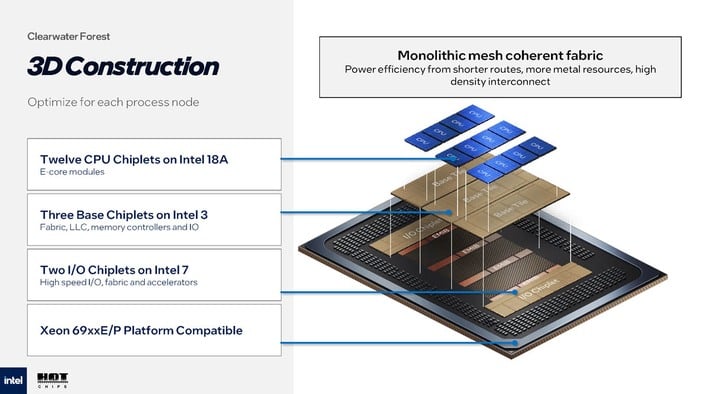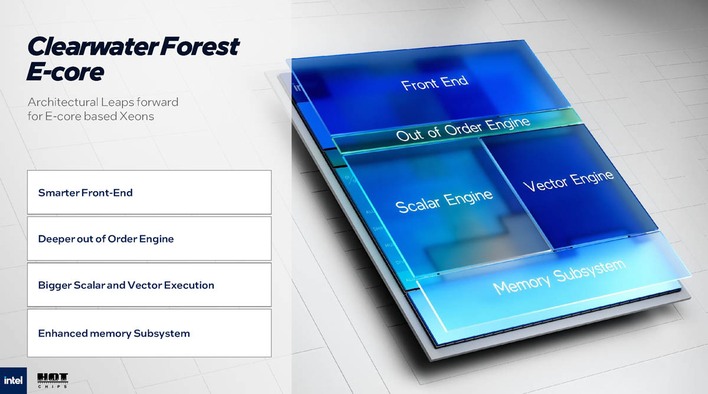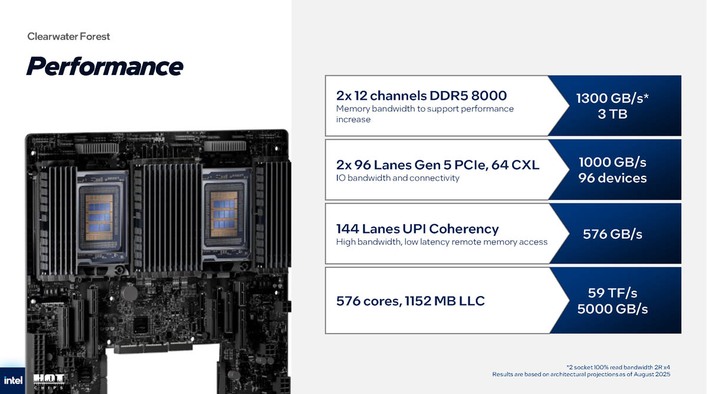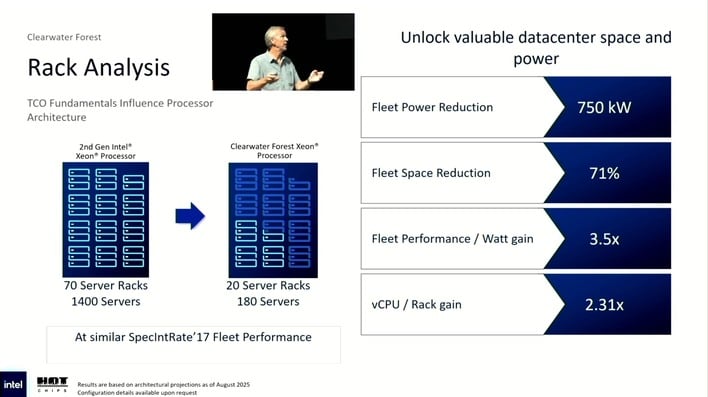Intel Details 18A Xeon Clearwater Forest With 288 Cores And A Big IPC Uplift At Hot Chips
There's a lot to talk about here, and we're going to cover it quickly, so pay attention. Clearwater Forest is the successor to Sierra Forest. It's built using twelve CPU chiplets, each with eight clusters of four CPU cores. These are based on the same fundamental core architecture found in Intel's Lunar Lake and Arrow Lake processors, serving as the E-cores in those chips. There's some discussion over whether Darkmont is simply the name of Skymont on 18A; that would line up considering Panther Lake, also expected to be built on 18A, will purportedly also use Darkmont e-cores.
According the coverage we've seen, Intel didn't actually give a name for the core architecture, but the specifications that Intel did share match up directly with what we know about Skymont from the Lunar Lake briefings: a massive 26 execution ports, eight-wide allocation with sixteen-wide retire, fully three separate instruction decoders, each of which can decode three instructions per cycle for a 50% gain over last-gen. Over all, Intel says that IPC is up by 17% on the new generation, which ain't bad at all.
Of course, what really matters is the performance, right? Intel says that a two-socket Clearwater Forest system with dual 288-core CPUs can achieve up to 1.3 TB/second of realized memory bandwidth, and that the configuration will support 3TB of memory. Each socket gets 96 lanes of PCIe 5.0 connectivity, including 64 lanes of CXL. Altogether, with 576 cores, Intel says the setup can achieve 59 TFLOPS, which is pretty impressive for CPUs.
Intel's biggest emphasis for Clearwater Forest is apparently on getting customers sitting on older Xeon hardware to upgrade, pointing out that they could be saving a lot of money over the longterm. According to Intel, versus 2nd-Gen Intel Xeon chips, customers could slash power by 75 kilowatts and reduce space required by 71%. Overall, Intel says the performance-per-watt is a whopping 3.5x better than the old second-generation Xeon parts.
Perhaps most exciting to folks who invested in Xeon recently is that the new parts will be compatible with the previous-generation Xeon 6900 platform. Intel hasn't said when you can make the swap, but the chips are expected within the next few months. ServeTheHome was live at Hot Chips 2025, and has more comprehensive coverage of the new parts if you're interested in more technical details.





